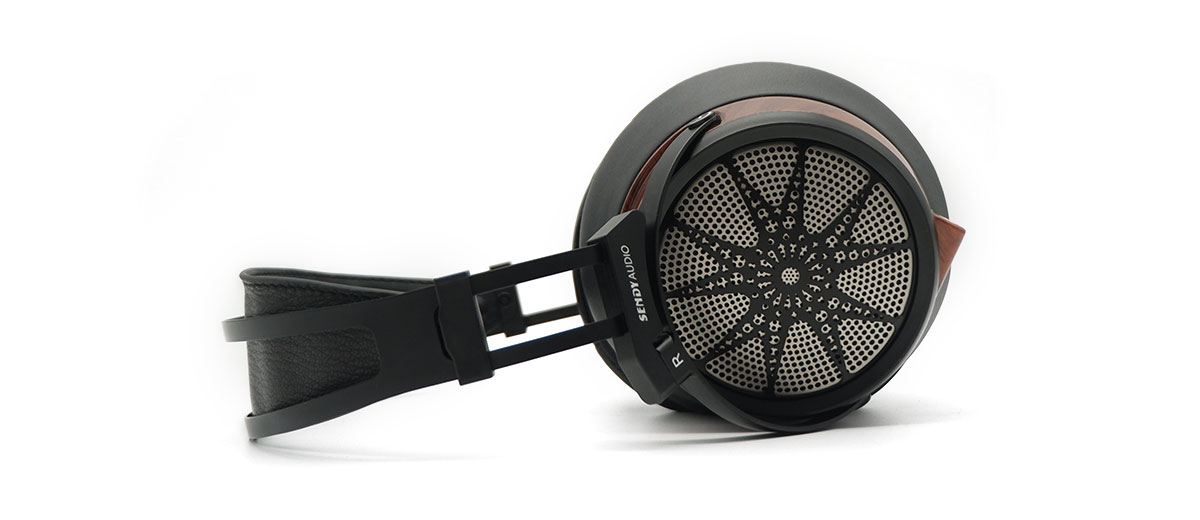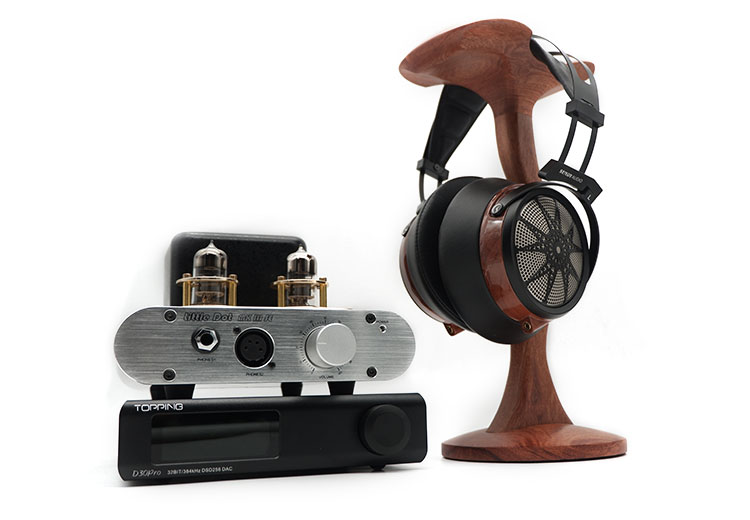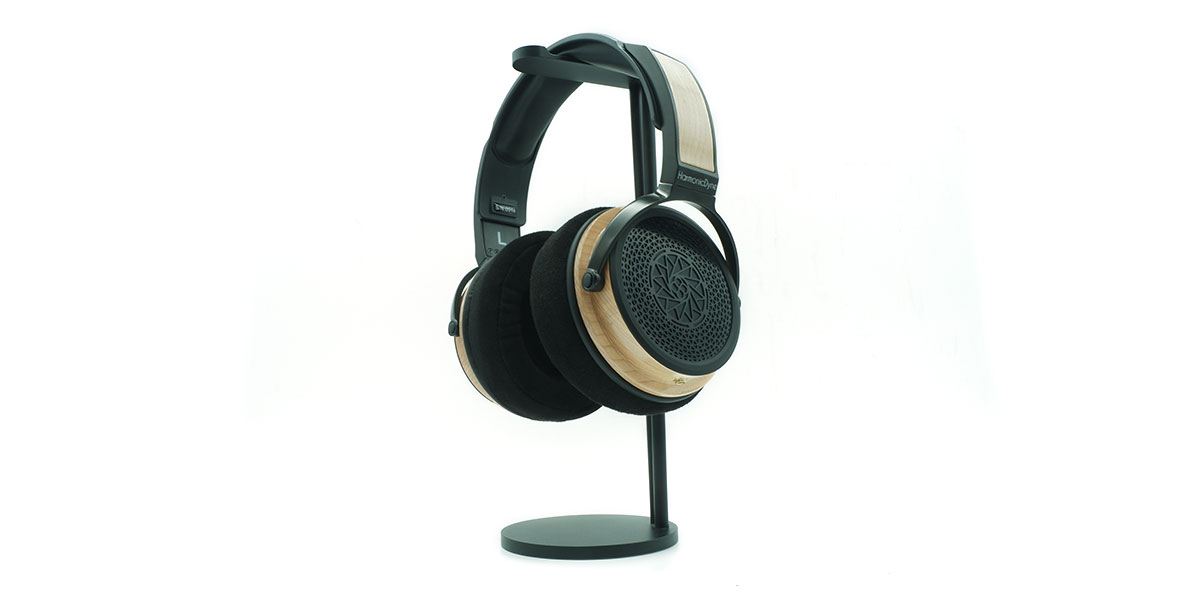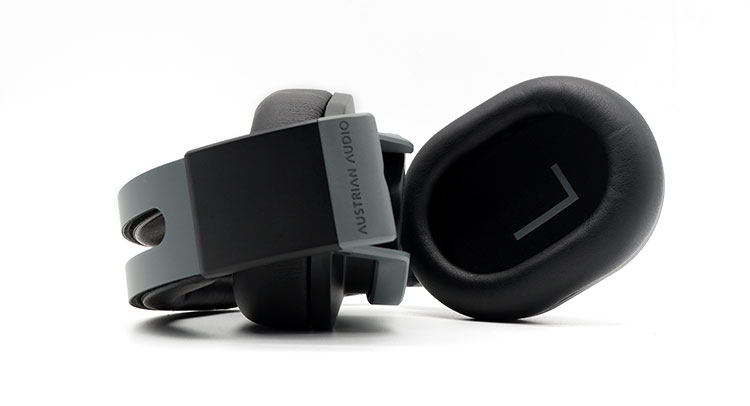Synergy
Efficiency
Having an SPL of 97dB, and an impedance of just 16Ω ensures that the Apollo can easily be driven by most good headphone amps.
When it’s plugged into the Topping A30 Pro, I only needed to go to 10 o’clock on the volume dial when the amplifier is set on medium gain. In contrast, the Little Dot MKIII SE only needed 22% to reach my maximum audible listening levels.
This leaves the Apollo on the more efficient side of the spectrum, so even when I try powering the Apollo with my iBasso DX200 DAP, I only needed to crank up the volume to around 60 to reach my normal listening levels. I believe most sources with adequate power can play well with the Apollo, but it’s still revealing enough to show the quality of the upstream gear.
Pairings
Changing from one amplifier or DAC to another can easily change the overall experience with the Apollo. So I first paired it with the Topping D30 Pro/A30 Pro DAC/Amp stack.
This stack of course easily powered the Apollo, however, there is a perceived lack of clarity, as the images ended up blurring into each other more than usual, while there is a lack of mid-bass energy, making it flatter and less engaging to listen to.
I ended up switching in the Little Dot MKIII SE tube hybrid amplifier, and this pairing easily revealed Apollo’s strengths. There is a tasteful amount of warmth, making the Apollo more engaging while staying safely away from being sibilant.
The soundstage, on the other hand, is stretched out a bit beyond my head while maintaining a good amount of image separation and layering.
Select Comparisons
HarmonicDyne Poseidon
$439.00
Technical
Instead of using planar magnetic drivers, the Poseidon uses a pair of 50mm Nickel coated dynamic drivers. The pure laboratory-grade Nickel coating on the Poseidon gives it a more rigid diaphragm that reduces distortion, particularly with the low frequency.
The Poseidon has an impedance of 64Ω and a sensitivity of 103dB/mW, which means that it requires a bit more power to achieve the same volume levels. And true enough, I needed to crank up the volume by around 5% on the Little Dot Mk3 SE to properly volume match.
Design
Both headphones use a high-gloss coated wood finish. The Poseidon has a lighter maple wood giving it more contrast with the black on the rest of the headphones. Also, the Poseidon ended up using more wood accents both on the earcups and the headband itself.
The headband on the Poseidon is a more traditional headband, with a sliding adjustment mechanism. Since both headphones have enough padding, they are equally comfortable. Both also allow for horizontal and vertical articulation of the earcups. However, the Poseidon is more unruly because the hinges are looser.
Both headphones also have a dual-entry system, but the one on the Poseidon uses 3.5mm TRS connections which make it easier to find aftermarket cables that are more durable. However, the cables on the Poseidon point straight down, so it can be a bit of a bother at times.
Performance
The Poseidon has a more even-handed tonal balance, trading more energy and engagement for a more subdued and measured presentation. This is mainly due to the Poseidon having a flatter mid-bass to midrange transition while having a generally more controlled treble response.
As tight as the bass is on the Apollo, the Posiedon manages to have an even tighter bass performance. However, this comes at the expense of a harder bass presentation making it less natural. Drums and bass guitars are equally detailed on both headphones, but the Poseidon has a comparatively faster decay.
The vocal presentation on both headphones is equally detailed, but the Poseidon sounds less vivid. This is partly due to the lack of a euphonic presentation, and an overall warmer vocal range. This also leads to a lack of airiness and sense of space when listening to live recordings. Midrange instruments take on a similar timbre giving pianos and guitars a warmer timbral tilt.
While the Poseidon can’t be classified as a darker headphone, the treble on the Poseidon is definitely pushed back comparatively. Making cymbal hits sound less striking, and makes for an overall more relaxed and rolled presentation.
Both headphones aren’t particularly wide, so the soundstage is generally limited to be within my head. The images that are formed by Poseidon are smaller while being more forward. So it ends up having a vocal track that’s more centered while being more inside my head rather than seemingly on my nose.
Goldplanar GL2000
$639
Technical
Both these headphones are planar magnetic headphones, with the GL2000 having a significantly larger driver at 112.5mm x 83mm. They also both have a dual-sided magnet structure, meaning both sides of the driver have magnets on them.
The GL2000 uses N52 Neodymium magnets which allows the GL2000 to apply a higher magnetic flux density while lacking the quad former design from Sendy Audio’s headphones. Also, the GL2000 needs a bit more power since it has an impedance of 60Ω and a sensitivity of 99dB.
Design
Based on the earcups, the GL2000 might immediately seem like a larger pair of headphones, but the aluminum chassis helps keep its weight down. Although the headband design is different, the headband on the GL2000 also allows for horizontal and vertical articulation of the earcups, so adjustments are easily done to get a comfortable fit out of them.
Both headphones also have removable cables, but the ones on the GL2000 use a more standard 3.5mm TRS connection making it easier to find replacement cables for it. Also, the cables point straight down, so they may create some comfort issues particularly with the earcups being so large.
One interesting thing with the GL2000 though is that it has 2 earpads that come in the package, and it allows for easier rolling. This allows the GL2000 to have more versatility in terms of its sound signature. It would be a bit difficult to find aftermarket earpads for either headphone though.
Performance
Both headphones tend to have a V-shaped response, with the GL2000 leaning more into the V with a particularly scooped up upper midrange. This results in an overall thinner midrange response giving vocalists less power behind the vocal presentation while making the instrument timbre sound comparatively thinner and drier.
Although the amount of bass that both headphones produce is comparable in terms of quantity, the GL2000 has a less detailed bass presentation. This is because the bass notes on the GL2000 tend to be more scattered making it harder to hear singular drum beats, while bass notes tend to blur together more readily.
When it comes to the treble presentation, the GL2000 tends to be more careful, making the treble response comparably more rolled off and subdued. However, this results in a less energetic treble presentation, leaving cymbal hits with less bite and edge while horns sound less natural due to a thinner timbre.
With the larger driver size, the GL2000 creates comparatively larger images within the soundstage while creating an overall larger soundstage in the process. However, when it comes to the placement of images, the GL2000 is less specific, with the images overlapping each other every so often.
Austrian Audio Hi-X65
$419
Technical
Instead of using a planar magnetic driver, the Hi-X65 uses a 44mm dynamic driver, which according to Austrian Audio is the optimal size for dynamic drivers as it reduces distortions while maintaining overall scale. Powering the driver is a ring magnet with an aluminum voice coil, which allows the driver to quickly change direction when needed.
Having an impedance of 25Ω, and a sensitivity of 93dB/mW means that the Hi-X65 requires a bit more power to drive. So with the Little Dot MKIII SE, I was required to crank up the potentiometer by around 5% to reach the same volume levels.
Design
Being a headphone that’s designed for studio monitoring, the Hi-X65 is more stripped-down and is limited to only having a single-ended cable entry system. However, the cable is detachable and connected using a 2.5mm bayonet connection, while aftermarket cables can be purchased through Austrian Audio.
Looking at the headphones themselves, the Hi-X65 has a ratchet adjustment system that allows the user to adjust the fit of the headphone. The earcups articulate both horizontally and vertically ensuring that they can be adjusted to the proper fit. While the earcups are a bit looser, they still don’t flop around too much, so storage generally isn’t much of an issue.
While both headphones have seemingly small earcups, Austrian Audio opted to have thinner walls on the earpads to ensure that most ear sizes would fit inside. I believe this approach is a bit more comfortable because my ears don’t touch the sides of the earpads as much.
However, both headphones are equally comfortable because there is sufficient padding both on the ear pads and the top of the headband.
Performance
The Hi-X65 strikes a more neutral ion line with its Studio referencing heritage. This is also a more midrange-centric presentation while maintaining similar levels of detail retrieval and energy.
Although the sub-bass on the Hi-X65 is more rolled off, there is some sub-bass presence that can still be heard to underly the rest of the music. Mid-bass is also more pulled back while having similar levels of detail retrieval and engagement giving drums a natural sense of attack and decay.
The vocal presentation seems to be the emphasis of the Hi-X65, which means that it’s comparatively more forward and euphonic despite being thinner. When the vocals are isolated though, both headphones have similar levels of detail retrieval. Midrange instruments, on the other hand, have a more full-bodied and vibrant presentation allowing pianos and guitars to sound brighter.
Cymbal hits aren’t as forward on the Hi-X65, so it’s comparatively smoothed over and draws less attention to cymbals. With horns on the other hand, both headphones have a generally natural presentation, however, the Hi-X65 is thinner while still having the same space and airiness around each note.
Although both headphones are open-backed, the Hi-X65 has a slightly larger soundstage, where there are images that extend a bit beyond my headspace. Images are also smaller on the Hi-X65, making it easier to differentiate each image from the other. However, this comes at the cost of a sense of scale, making the Hi-X65 feel less realistic comparatively.
Our Verdict
Although the sonic presentation of any headphone is very important, making sure that the design doesn’t get in the way also matters.
With the Apollo, Sendy Audio made sure that the ergonomics and adjustments allow for a wide variety of head sizes and shapes. My only minor gripe was the flared-up earpads touching my ears at certain points in time.
Instead of aiming for a strictly neutral tonal balance, Sendy Audio opted to give the Apollo a more colored presentation with a tasteful v-shaped tilt all while maintaining a good amount of PRaT.
With a sonic presentation that’s both energetic and engaging the Apollo creates a listening experience far from reference but certainly enjoyable.
Sendy Apollo Specifications
- Transducer size 68mm
- Frequency response 20Hz-40kHz
- Sensitivity 95dB +/- 3dB
- Impedance 16Ω +/- 15%
- Cable length 2.0m +/- 0.2m
- Connector 4.4mm balanced
- Weight 395g










